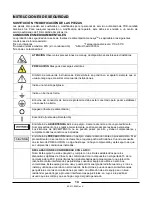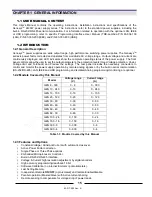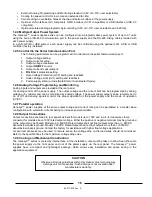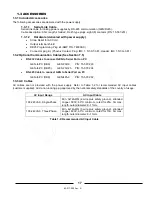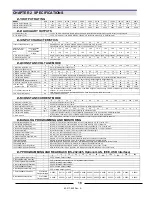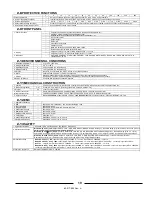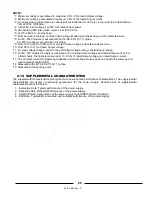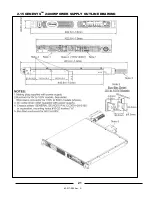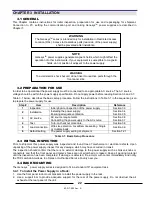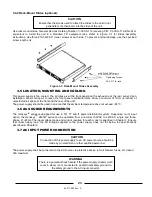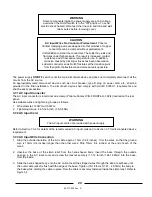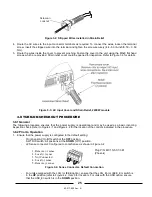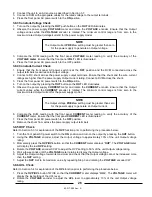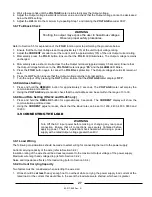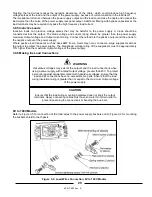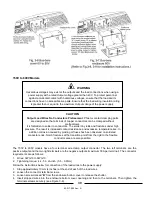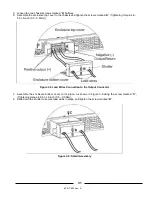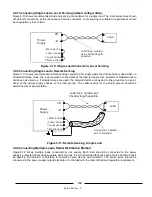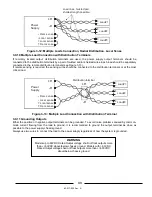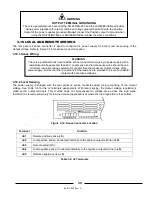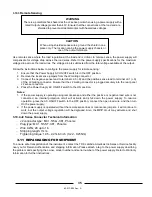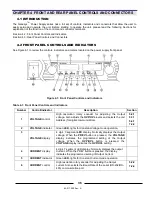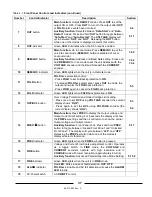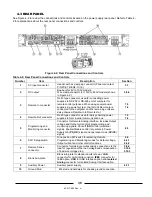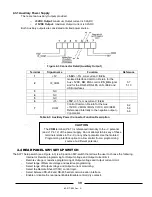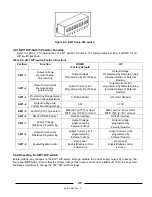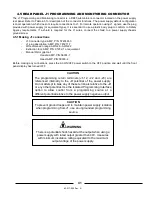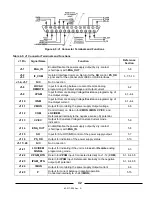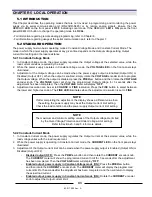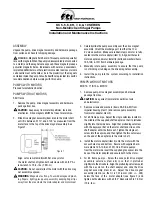
83-517-000 Rev.
A
28
CAUTION
When local sensing, a short from
“+LS
or
+S”
to ”
–V
or
–S
or
–LS
” (or “
–
LS
or
–S
” to “
+V
or
+S
or
+LS
”), will cause damage to the power supply.
Reversing the sense wires might cause damage to the power supply in
local and remote sensing. (Do not connect
“–S” to +V” or “+S to –V”
).
2. Wire size should be selected to enable voltage drop per lead to be less than 1.0V at the rated Output
current. Although units will compensate for up to 5V in each load wire, it is recommended to minimize the
voltage drop (1V typical maximum) to prevent excessive output power consumption from the power supply
and poor dynamic response to load changes. Please refer to Tables 3-2 and 3-3 for maximum wire length
(to limit voltage drop) in American and European dimensions respectively.
Wire size
(AWG)
Resistivity
(Ohms/1000ft)
Maximum Length in feet to Limit
Voltage Drop to 1V or less
10A
20A
50A
100A
200A
400A
14
2.526
40
20
8
4
2
---
12
1.589
60
30
12
6
3
---
10
0.9994
100
50
20
10
5
2
8
0.6285
160
80
32
15
8
4
6
0.3953
250
125
50
25
12
6
4
0.2486
400
200
80
40
20
10
2
0.1564
600
300
125
60
30
15
0
0.0983
1000
500
200
100
50
25
Table 3-2: Maximum Wire Length for 1V Drop Across Lead (in feet)
Cross Sect.
area
(mm²)
Resistivity
Ohms/km
Maximum length in meters to limit
voltage drop to 1V or less
10A
20A
50A
100A
200A
400A
2.5
8.21
12.0
6.0
2.4
1.2
0.6
0.3
4
5.09
18.6
9.8
4.0
2
1.0
0.5
6
3.39
29.4
14.8
5.8
2.9
1.45
0.7
10
1.95
51.2
25.6
10.2
5.1
2.5
1.25
16
1.24
80.0
40.0
16.0
8
4
2
25
0.795
125.0
62.0
25.2
12.6
6.3
3.1
35
0.565
177.0
88.0
35.4
17.7
8.8
4.4
Table 3-3: Maximum Wire Length for 1V Drop Across Lead (in meters)
For currents not shown in Table 3-2 and 3-3, use the formula:
Maximum length = 1000/(current x resistivity)
where current is expressed in Amperes and resistivity in ohms/km or ohms/1000ft.
Wire Termination
3.9.3
The wires should be properly terminated with terminals securely attached.
DO NOT
use unterminated wires for
load connection at the power supply.
Noise and Impedance Effects
3.9.4
To minimize the noise pickup or radiation, the load wires and remote sense wires should be twisted pairs to the
shortest possible length. Shielding of sense leads may be necessary in high noise environments. Where
shielding is used, connect the shield to the chassis via a rear panel Ground screw. Even if noise is not a
concern, the load and remote sense wires should be twisted-pairs to reduce coupling, which might impact the
stability of the power supply. The sense leads should be separated from the power leads.

